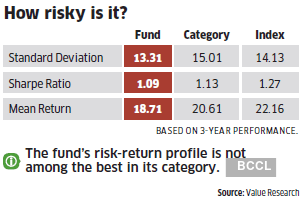Over-the-Counter Birth Control: Examining The Post-Roe Landscape

Table of Contents
The Current State of OTC Birth Control Access
Access to effective and affordable birth control is a cornerstone of reproductive healthcare. Understanding the current landscape of OTC birth control is the first step towards ensuring better access for all.
Types of OTC Birth Control Available
Currently, the most readily available OTC birth control options are:
- Condoms (male and female): These barrier methods offer protection against both pregnancy and sexually transmitted infections (STIs). Male condoms are widely available and relatively inexpensive, while female condoms, though effective, are less widely accessible and often more costly.
- Emergency Contraception (EC): Also known as the "morning-after pill," emergency contraception like Plan B One-Step is available over-the-counter without a prescription for individuals aged 17 and older. Other EC options may require a prescription. The cost of emergency contraception can vary depending on the brand and location.
Other hormonal birth control methods, such as pills or patches, are not currently available over-the-counter and require a prescription from a healthcare provider. The potential for more hormonal birth control options becoming available OTC is a topic of ongoing discussion and advocacy.
Geographic Variations in Access
Access to even basic OTC birth control options like condoms and emergency contraception varies significantly across the United States.
- Rural vs. Urban Access: Rural areas often have fewer pharmacies and healthcare providers, creating barriers to access for individuals in these communities. Limited transportation options can further exacerbate this problem.
- State Laws and Regulations: Some states have enacted laws that directly or indirectly restrict access to certain types of birth control, including OTC options. These restrictions can include limitations on where EC can be purchased or dispensed.
- Examples of Disparities: States with more liberal reproductive healthcare laws generally have better access to a wider range of birth control options compared to states with more restrictive laws. This creates a significant health equity issue.
The Role of Insurance Coverage
Even for OTC birth control, insurance coverage significantly impacts access and affordability.
- Affordable Care Act (ACA): The Affordable Care Act mandates that most insurance plans cover preventive services, including contraception, without cost-sharing. However, this coverage can be affected by the type of plan and the individual's specific circumstances.
- Out-of-Pocket Costs: Individuals with high-deductible health plans or limited insurance coverage may still face significant out-of-pocket costs for OTC birth control, particularly for emergency contraception or more expensive brands of condoms. This financial barrier disproportionately affects low-income individuals.
The Impact of Post-Roe Policies on Birth Control Access
The overturning of Roe v. Wade has created a ripple effect impacting access to all forms of reproductive healthcare, including birth control.
State-Level Restrictions
Many states have introduced or are considering legislation that restricts access to various reproductive healthcare services, impacting birth control availability.
- Restrictions on specific methods: Some states are attempting to restrict access to specific types of birth control, particularly those considered "abortifacients," even though these methods are used for various reproductive health purposes.
- Legal Challenges: These state-level restrictions are facing legal challenges from advocacy groups and individuals fighting to protect access to reproductive healthcare.
Increased Demand and Potential Shortages
Post-Roe, there is a growing concern regarding increased demand for all forms of birth control, potentially leading to shortages.
- Increased demand for EC: The increased demand for emergency contraception is particularly concerning, as it is a crucial method for preventing unintended pregnancies.
- Supply Chain Issues: Increased demand coupled with potential supply chain disruptions could lead to shortages of specific birth control methods, further limiting access.
Advocacy and the Future of OTC Birth Control
Advocacy groups and ongoing research are crucial in ensuring access to affordable and accessible birth control.
The Role of Advocacy Groups
Numerous organizations are actively working to expand access to affordable and accessible birth control.
- National and Local Organizations: Groups like Planned Parenthood and NARAL Pro-Choice America are actively involved in legal challenges to restrictive laws and advocating for increased access to birth control, including over-the-counter options.
- Ongoing Legal Battles: These organizations are engaged in numerous legal battles to protect access to reproductive healthcare, including access to various forms of birth control.
Future Directions for OTC Birth Control
Research and development in the field of birth control continue, paving the way for potential future improvements and expanded OTC access.
- New Formulations and Improved Efficacy: Research is underway to develop more effective and convenient OTC birth control methods.
- More Hormonal Options OTC: The possibility of more hormonal birth control options becoming available over-the-counter is a key area of focus for advocacy groups and researchers.
Conclusion
The post-Roe landscape has undeniably complicated access to birth control. While over-the-counter options exist, significant disparities remain based on location, insurance coverage, and state-level regulations. Advocacy efforts are crucial in ensuring equitable access for all. Understanding the current limitations and potential future developments regarding over-the-counter birth control empowers individuals to make informed decisions about their reproductive health. Staying informed about changes in legislation and advocating for improved access to affordable and readily available over-the-counter birth control methods is vital in the ongoing fight for reproductive freedom. Learn more about your options for over-the-counter birth control and get involved in advocating for improved access in your community.

Featured Posts
-
 Hungarys China Ties Remain Strong Despite Us Pressure
Apr 29, 2025
Hungarys China Ties Remain Strong Despite Us Pressure
Apr 29, 2025 -
 Unveiling The Ccp United Fronts Activities In Minnesota
Apr 29, 2025
Unveiling The Ccp United Fronts Activities In Minnesota
Apr 29, 2025 -
 Selling Sunset Star Exposes La Landlord Price Gouging After Fires
Apr 29, 2025
Selling Sunset Star Exposes La Landlord Price Gouging After Fires
Apr 29, 2025 -
 Kuxius Solid State Power Bank Higher Cost Longer Life
Apr 29, 2025
Kuxius Solid State Power Bank Higher Cost Longer Life
Apr 29, 2025 -
 Top Performing India Fund Dsp Takes A Conservative Approach
Apr 29, 2025
Top Performing India Fund Dsp Takes A Conservative Approach
Apr 29, 2025
Latest Posts
-
 The Challenges Of Producing All American Goods
Apr 29, 2025
The Challenges Of Producing All American Goods
Apr 29, 2025 -
 Why Making An All American Product Is So Difficult
Apr 29, 2025
Why Making An All American Product Is So Difficult
Apr 29, 2025 -
 Ohio Train Derailment Investigation Into Long Term Toxic Chemical Presence In Buildings
Apr 29, 2025
Ohio Train Derailment Investigation Into Long Term Toxic Chemical Presence In Buildings
Apr 29, 2025 -
 Detailed One Plus 13 R Review A Budget Friendly Alternative To Pixel 9a
Apr 29, 2025
Detailed One Plus 13 R Review A Budget Friendly Alternative To Pixel 9a
Apr 29, 2025 -
 Choosing Between One Plus 13 R And Pixel 9a Performance Camera And Value
Apr 29, 2025
Choosing Between One Plus 13 R And Pixel 9a Performance Camera And Value
Apr 29, 2025
